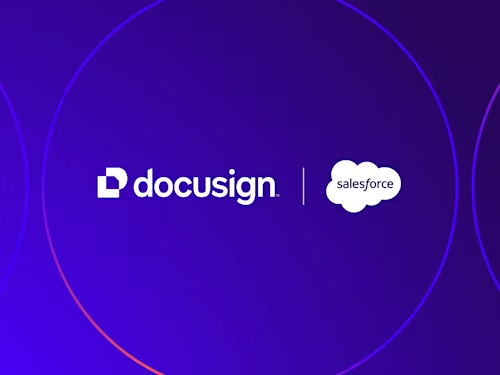
Organizações inteligentes se preparam para o aumento dos orçamentos de TI
How do IT leaders prioritize investments that will deliver immediate ROI and set the stage for long-term economic growth?

Apesar da crescente especulação sobre uma desaceleração econômica, os líderes de TI devem se preparar para um ambiente incerto enquanto apoiam a transformação digital, a necessidade infinita de oferecer diferenciação competitiva e a busca pela eficiência operacional. O gerenciamento de riscos e a segurança cibernética robusta também permanecem fundamentais, assim como a necessidade de otimizar as experiências de clientes e funcionários.
Com todos esses projetos concorrentes e de missão crítica, como os líderes de TI priorizam os investimentos que proporcionarão ROI imediato (como melhorias operacionais ou ganhos de eficiência) e preparam o cenário para o crescimento econômico de longo prazo?
Mesmo em uma economia imprevisível, os líderes de TI estão investindo
Uma pesquisa com 968 profissionais de TI de empresas na América do Norte, Europa, Ásia e América Latina responde a algumas perguntas críticas sobre gastos com TI em 2023.
Não surpreende que 83% dos entrevistados expressaram preocupação com a ameaça de uma recessão em 2023. Cerca de 50% tomaram ou planejam tomar medidas para se preparar para uma queda na atividade econômica. Essas medidas incluem a redução de gastos dispensáveis, a reavaliação de fornecedores de contratos, descomissionamento de infraestrutura e consolidação de tecnologia redundante.
Em meio à incerteza econômica, há notícias surpreendentes sobre o financiamento do departamento de TI. Cinquenta e um por cento das organizações aumentarão seu orçamento de TI em 2023. Para enfatizar a função crítica do departamento de TI e a necessidade de financiar seus esforços em épocas boas e ruins, apenas 6% reduzirão seus gastos com TI. No geral, os orçamentos de TI devem crescer 13% em relação ao ano anterior.
Curiosamente, embora uma recessão possa estar no horizonte, 58% dos entrevistados preveem que sua organização verá um aumento na receita ano a ano, enquanto 22% não preveem mudanças. Apenas 10% esperam uma queda na receita anual.
O que está promovendo o aumento nos orçamentos de TI?
A pesquisa da Spiceworks Ziff Davis identifica vários fatores que afetam o crescimento do orçamento de TI em 2023. Primeiro, muitas organizações precisam atualizar a infraestrutura desatualizada como parte do esforço para digitalizar, em resposta às pressões da concorrência, ou melhorar a eficiência operacional.
Em segundo lugar, há uma maior prioridade nos projetos de TI. Isso se alinha com outras pesquisas da Equinix e da Red Hat, que também destacam a ampla variedade de projetos críticos sob a alçada do departamento de TI e o papel gigantesco que o departamento tem no sucesso de uma organização. O investimento em iniciativas de TI costuma ser fundamental para gerar ganhos de eficiência em diferentes partes da organização.
O investimento em TI pode gerar eficiência. Por exemplo, as organizações que reduziram a dependência de contratação de suporte externo economizaram US$ 1,3 milhão em custos de terceirização. Devido à sua capacidade de promover vários fluxos de economia de custos e de gerar receita, a função do departamento de TI continuará a crescer em visibilidade e importância.
Um terceiro fator que está promovendo o crescimento dos orçamentos de TI é a necessidade de aumentar os gastos com segurança. Isso se deve ao aumento da supervisão do governo e à necessidade de apoiar equipes remotas. De que maneira e em que aumentar os gastos com segurança deve estar na vanguarda das mentes dos líderes de TI ao longo do próximo ano.
Em que o departamento de TI investirá seu orçamento de 2023?
Hardware: 30%
Software: 28%
Serviços em nuvem: 23%
Serviços gerenciados: 18%
Dentro desses itens orçamentários, vamos examinar mais detalhadamente as principais despesas.
Hardware: Laptops, desktops e servidores consomem 43% do orçamento
Software: Software de segurança, software de produtividade e sistemas operacionais consomem 32% do orçamento
Despesas com nuvem: Soluções de produtividade, aplicativos on-line de backup/restauração/recuperação e de suporte aos negócios consomem 31% do orçamento
Serviços gerenciados: Aplicativos de negócios gerenciados, segurança e hospedagem gerenciadas consomem 31% do orçamento
Líderes de TI se preparam para enfrentar o desafio
Enquanto uma desaceleração econômica se aproxima, as equipes de TI estão aumentando os orçamentos, mesmo que prevejam um crescimento econômico mais lento do que o normal. Para enfrentar esse desafio com sucesso, os líderes de TI precisam equilibrar algumas tarefas, ser ágeis o suficiente para se ajustar a uma possível desaceleração nos negócios e, ao mesmo tempo, apoiar o crescimento com maior segurança. Essa capacidade de lidar com prioridades conflitantes é como a TI ganha e mantém um lugar de protagonismo e como carreiras são construídas.
Se você ainda está desenvolvendo o orçamento do próximo ano ou tentando comparar o que você finalizou, é vital manter o departamento de TI no centro dos negócios que eles apoiam. Quando tantos aspectos permanecem incertos, o que fica evidente é que o departamento de TI deve desempenhar um papel fundamental para ajudar todos os negócios a prosperarem em 2023.
Publicações relacionadas
Docusign IAM é a plataforma de acordos que sua empresa precisa para o sucesso


